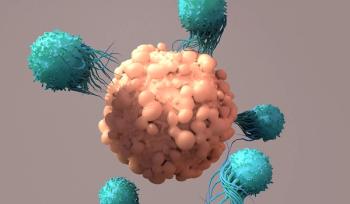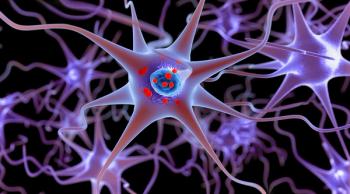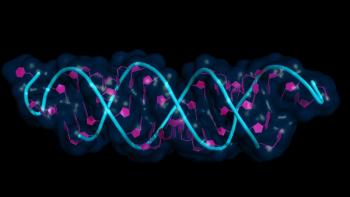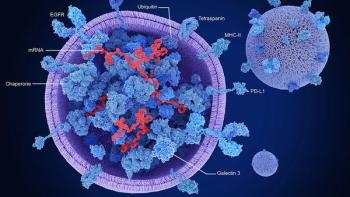
- BioPharm International June 2025
- Volume 38
- Issue 5
- Pages: 23–26
Considerations for Quality Improvement of Cleaning, Disinfection, and Cleaning Validation in Biopharmaceutical Manufacturing, Part I: Facility and Cleanroom Cleaning Practices
This paper highlights considerations based on risk that ensure ongoing success as well as improvement when applying cleaning and decontamination principles for biopharmaceutical cleanroom surfaces.
Peer-reviewed
Article Submitted: March 6, 2025.
Article Accepted: April 10, 2025.
Abstract
A biopharmaceutical manufacturer must ensure product purity and patient safety by understanding the foundations of a robust contamination control strategy. Assessing risk and providing specific and appropriate solutions to reduce microbiological contamination is important. Cleaning validation of product contact surfaces and cleaning and disinfection of manufacturing area surfaces are integral to microbiological contamination control. This paper highlights considerations based on risk that ensure ongoing success as well as improvement when applying cleaning and decontamination principles for biopharmaceutical cleanroom surfaces.
The capability of a biopharmaceutical manufacturer to ensure product purity and patient safety originates from a culture of learning consistency and quality improvement in understanding the foundations of a robust contamination control strategy leading to reducing risk and providing specific and appropriate solutions.
Two substantial and common labor-intensive activities that implement contamination control in an operation are cleaning and disinfection of facility surfaces as well as cleaning and decontamination of product contact equipment. Equipment qualification and cleaning validation (CV) or at least cleaning verification are necessary add-on activities which assist in regulatory compliance and expectations of regulatory investigators. Thus, a broad application approach for designing and ongoing evaluation of efficacy and efficiency across both equipment and facilities will influence considerations for improvements of the previously mentioned activities.
A team of subject matter experts is necessary to support risk assessment. The same type of team should support development and implementation of cleaning, disinfection, and validation of the outcomes from the latter activities.
Analysis of the outcomes from cleaning and disinfection for microbiological contamination control is performed with certain recovery methods for microbial detection. Moreover, cleaning of equipment is analyzed by chemical detection methods, which in some cases can also indicate microbiological bioburden (e.g., total organic carbon or conductivity) but often not easily interpreted. It is commonly assumed, though, that removal of chemical contamination often is suggestive of concomitant removal of vegetative microbial contamination.
This paper is part one of a two-part series that will highlight and discuss considerations based on risk that are significant and valuable to ensure ongoing success as well as improvement when applying cleaning and decontamination principles for biopharmaceutical equipment and cleanroom surfaces. This paper describes the hygienic actions required in biopharmaceutical manufacturing, including relevance to sterile manufacturing and cleanrooms. Part two describes the cleaning of the product contact surfaces by comparing standard cleaning solutions to the use of commodity raw materials and the significant role in the quality aspects of a pharmaceutical manufacturing operation.
A biopharmaceutical perspective–sterile products
Biopharmaceuticals are commonly introduced as sterile products during clinical development (first time in human) and initial commercial dose. Bulk biological material is often manufactured as low bioburden product prior to sterilization. Process steps downstream but prior to sterilization are low bioburden controlled. Sterile manufacturing is well understood and described, yet many biopharmaceuticals cannot withstand the conditions of terminal sterilization. The first intent manufacturing approach for the latter products is aseptic manufacturing using bacterial retentive filtration. Certain process steps have been designed with single-use systems (SUS), replacing the need for routine cleaning and sterilization between batches. In cell and gene therapy manufacturing, an additional restriction can exist, which is the inability to filter human cells that have been intentionally manipulated for efficacy. Containment or barrier systems have become a common manufacturing design for aseptic manufacturing to increase the assurance of removing human-sourced microbiological contaminants during the process and from product. The cleanroom and facility housing a biopharmaceutical process, however, still requires adequate cleaning and decontamination in compliance with good manufacturing practices (GMP) (e.g., Annex 1) (1), as part of a contamination control strategy.
Current approach to facility and cleanroom cleaning practices
A biopharmaceutical facility has multiple areas of activities that are directly and indirectly involved with manufacturing. Non-classified areas including warehouse, locker room, utility rooms, and office areas are usually cleaned and disinfected with minimal risk to product exposure. Classified areas with increasing risk begin, based on design, with entry and exit to cleanrooms where operators change from external clothing and shoes to donning appropriate gowning and shoe/shoe covers/booties relative to helping meet the International Organization for Standardization (ISO) particulates classification for the relevant activities and rooms. Control of particulates is ensured by engineering design (e.g., smooth non-porous materials for floors, walls, and ceilings; dedicated HEPA filtration system; cleanroom layout; containment) as well as by operator procedure/training for minimizing non-viable particles. Control of microbiological (viable) particles on surfaces is thought to be partly met with non-viable particle control, yet there is a lack of scientific data to prove a direct correlation. Thus, microbiological control in a classified area is intentionally based on engineering design, flow, and activity of operators/materials/equipment, aseptic behavior and skills, and the application of a cleaning and decontamination program that meets the broader contamination control strategy (1).
Cleaning in a cleanroom has always been an intentional first step in a cleaning and decontamination program. Yet proof of the outcome of (non-product contact) surface cleaning has been a visual activity (observation of residue) followed by corresponding verification (or qualification) of the efficacy of subsequently applied disinfectants using environmental microbiological monitoring. Cleaning is intended to remove residues that can negatively affect the efficacy of a disinfectant. Residues from environmental particles, product, other soils, human contact, and disinfectants can result in restrictive access of a disinfectant against the targeted microbiological bioburden on the surface. Applying cleaning as the first step is necessary for manual disinfection as well as automated hydrogen peroxide vapor bio-decontamination.
Biopharmaceutical cleanroom disinfection
Using materials that have been terminally sterilized as first intent and sterilizing surfaces where possible removes the need to control bioburden by manual or automated means. Regardless of terminology used, disinfectants, sanitizers, virucides, and sporicides represent common agents that reduce microbiological bioburden with a proper application technique and frequency.
A pragmatic approach to disinfection would include the usage of a broad-spectrum disinfectant on a routine basis, as well as sporicide, on an appropriate, infrequent basis. Learning the microflora in your operation represents the first step followed by appropriate selection of disinfectants to control the bioburden in your cleanroom. Disinfectants act on microbiological physiology or structure (See Mechanism of Disinfectant Activity Against Microbial Cells table in Ref. 2).
When selecting a broad-spectrum disinfectant, it is important to keep in mind not only the intended microflora to reduce, but also the residue that can have a long-term effect. Selection of disinfectants with lower residue will lead to more efficient application frequency because a rinsing step to remove residue would be required less often.
The types of residues from each type of disinfectant can differ as well as the application coverage capability (examples seen in Tables I and II). Application coverage can also differ with vapor versus spray versus mist, due to particle size of droplets and amount of aerosolization.
Historically, phenol-based disinfectants used to be commonly applied. Phenol-based disinfectants have slowly been replaced in the past decade by a few other excellent broad-spectrum disinfectants such as quaternary ammonium, peroxides, and peracetic acid mixes. The hazard of phenols to an operator led to their complete discontinuance in Europe in 2018, and at some point, that cultural issue will have an influence in the Western hemisphere, thus leading companies to changing to an alternative disinfectant usage.
There’s an expectation that sporicides leave residues that need to be rinsed off the surface. When determining which sporicidal agent to use and the frequency of their application, remember that it would not be appropriate to overuse/overdose high-residue disinfectants, even though the efficacy may be highly acceptable. It is prudent not to overuse sporicides because of the hazardous nature they may offer to operators and the potential incompatibility with surface types, which can lead to discoloration, degradation, and residue contamination.
Mitigation for ‘spores’
In the past decade, sporicides have been often selected for application in controlling fungi due to raised awareness by regulatory agencies for control of fungi in sterile operation environments. However, the scientific realization as shown in the literature is that broad-spectrum disinfectants are just as effective against fungal spores, such as from those fungi which might commonly be found in cleanroom as well as clean classified areas (e.g., Aspergillus, Penicillium, Cladosporium). Some types of fungal species, such as Chaetomium sp., may require sporicide usage; although, this species is not commonly found in pharmaceutical clean areas and clean zones. The source of fungal contamination that may show up in recoveries in classified areas often can come from operators clothing worn outside the facility and brought in and not replaced for activities in a cleanroom, such as by wearing just a Tyvek overcoat, gray areas with utilities piping that are routinely humid, or packaging materials such as cardboard (many consumables are shipped in cardboard). Better control of these sources may lend toward better contamination control for reduction of the recovery of fungal species rather than choosing to use a sporicide on a frequent basis.
A pragmatic approach for the removal of bacterial spores is using manual (or automated, if available) sporicide application such as peracetic acid, hydroxide peroxide, or hypochlorites. Frequency of application will depend on the frequency of recovery of bacterial spores. Pragmatic thinking comes from risk assessment and the knowledge of the materials, personnel, equipment, and processes in the operation. There is no standard or commonly expected approach for the application of sporicide because every biopharmaceutical operation in cleanrooms or other classified areas is unique in personnel, facility, materials, origins of cellular materials, and geographic location. It is also possible and appropriate to have a different program for cleaning and disinfection in facilities adjacent to each other on the same building lot, as well as two different operations in cleanrooms on the same floor of the same facility. Again, the fundamental program comes from decisions based on risk and process knowledge.
Reducing cleaning variability
Manual operator activities are inherently variable, which can add risk when performing activities in a cleanroom with aseptic operations. Training and oversight are key parameters to build confidence skills and competency of the cleaning operators and to reduce, where possible, variability that can impact adequate bio-decontamination (or disinfection). Some examples of application areas where risk can increase include overuse of wipes (hand or mop), improper wipe application, use of expired disinfectant, poorly maintained application equipment, inadequate contact time, and inadequate cleaning prior to disinfection. It is valuable to request application equipment suppliers to provide either inspection or training for identifying signs of deterioration of their equipment. Adequate cleaning operator knowledge training should be followed by verbal and/or digital evaluation; skills training should be evaluated periodically by visual oversight and environmental microbial sampling to qualify continued application of those skills. It has been acknowledged in industry that good management of cleaning team operators leads to more consistency and trust. Ongoing cleaning team communications is built on trust (3).
Manual and automated decisions
It is well-known that manual application of disinfectants is inherently variable due to the human operator applying the disinfectant. Thus, the ability to reduce variability by using instrumentation or automation, if applicable, would be a good approach. Automated processes may also be able to be validated increasing assurance of consistent application for efficacy and efficiency.
The fill/finish process is commonly performed in an ISO 5 environment that represents restricted access barrier systems (RABs) or isolators, which should be designed to be easily cleaned and decontaminated. Due to the critical nature of an ISO 5 environment mandated for fill/finish operation, all surfaces within an ISO 5 zone must be kept clean and decontaminated. Manual cleaning can be applied; although, it is more difficult with complex internal process design and in larger equipment. Use of robotics can increase or decrease complexity. Manual decontamination can also be applied to these equipment types. Modern design, though, has led to a common approach of including automated systems that apply hydrogen peroxide vapor. During the application, all surfaces can be covered by the disinfectant, guaranteeing high assurance, consistency, and the potential to be validated. Validation of the bio-decontamination process can lead to a 6-log reduction of bacterial spores.
Using ‘mechanical’ (wiping by human operators) action with manual wipes or mops inherently impacts surfaces by moving and/or removing microorganisms on those surfaces, which occurs during the cleaning step and during the subsequent disinfection step. Laboratory testing can indicate the impact of mechanical action (European Norm [EN] method 16615 [4]) on surfaces of different hard non-porous materials, and then in actual use conditions environmental monitoring of surfaces can indicate effect on microbiological recoveries.
Selection and application of cleaner and disinfectants, for manual or automated application, are specific for the local operations and protection of the manufactured product. Following these key parameters should be considered:
- surface material compatibility
- temperature in the area of application
- operator safety and recommended personal protective equipment (PPE)
- expected efficacy for microbial flora in cleanroom(s)
- method of application
- frequency of application
- potential residue expected and how to remove it
- contact time
- consistent availability and supplier integrity.
It’s very important as part of the strong quality assurance program that suppliers of materials that are part of the contamination control program can supply those materials in a consistent manner, and they should have integrity and timely communication related to the changes of their products. This also indicates that disinfectants do fit into this realm of critical materials in a facility manufacturing sterile or aseptic drugs.
Summary
This first part of the series highlighted the hygienic actions that are required in biopharmaceutical manufacturing, starting with a discussion on sterile manufacturing and cleanrooms. Cleaning and disinfection of a biopharmaceutical facility must incorporate risk assessment and considerations which are significant to ensure ongoing success and improvement during the application of cleaning and decontamination principles for biopharmaceutical cleanroom surfaces. Even with the containment or barrier systems that are becoming a common manufacturing design for aseptic manufacturing, the manufacturing space housing a biopharmaceutical process (from upstream to downstream and low bioburden to aseptic conditions) still requires adequate cleaning and decontamination in compliance with GMPs to assure patient safety and consistent product quality.
Acknowledgements
The authors wish to thank the Ecolab colleagues Jasmin Weber, Susan Youngquist, Anna Febrero, Andreas Krause, and Kevin Nyssen for their review, insightful comments, and suggestions.
References
1. EC. Annex 1 Manufacture of Sterile Medicinal Products.
2. USP. <1072> Disinfectants and Antiseptics.
3. Raymond, P.; Ray, S.; Sanmartin, L.; Singer, D. Managing a Cleanroom Cleaning Team. Am. Pharm. Rev. 2023. 26 (5), pp26-32.
4. EN 16615:2015-06/Ap2:2016-07. Chemical Disinfectants and Antiseptics—Quantitative Test Method for the Evaluation of Bactericidal and Yeasticidal Activity on Non-Porous Surfaces with Mechanical Action Employing Wipes in the Medical Area (4-Field Test)—Test Method and Requirements.
About the authors
Thomas Altmann is principal global technical consultant at Ecolab Life Sciences. Donald Singer is senior global microbiology consultant with New Beginnings Microbiology, a Fellow in the American Society for Quality, and formerly with Ecolab Life Sciences. Stefan-Julian Frohberger is senior microbiologist at Ecolab Life Sciences.
Article details
BioPharm International®
Vol. 38, No. 5
June 2025
Pages: 23–26
Citation
When referring to this article, please cite it as Altmann, T.; Singer, D.; and Frohberger, S.J. Considerations for Quality Improvement of Cleaning, Disinfection, and Cleaning Validation in Biopharmaceutical Manufacturing, Part I: Facility and Cleanroom Cleaning Practices.BioPharm International 2025 38 (5).
Articles in this issue
6 months ago
Qualifying Expertise for Quality Support6 months ago
Guidance on Quality Culture Standards6 months ago
Inspiring DevelopmentsNewsletter
Stay at the forefront of biopharmaceutical innovation—subscribe to BioPharm International for expert insights on drug development, manufacturing, compliance, and more.





